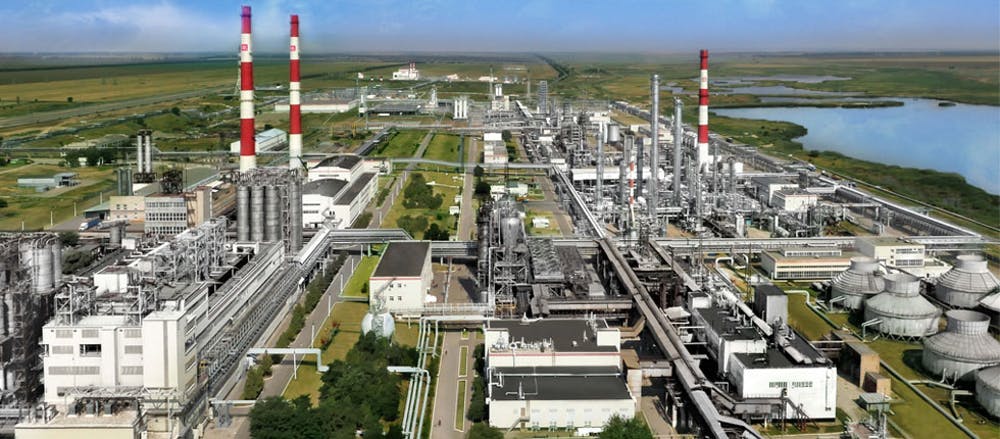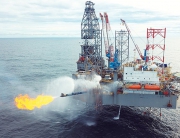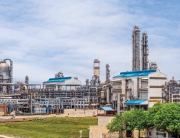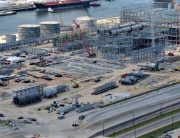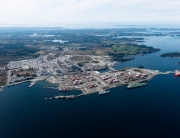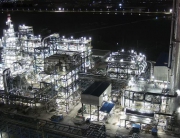PJSC LUKOIL is adding a second gas processing unit (GPU) that will enable increased production of petrochemicals from northern Caspian Sea natural gas at subsidiary Stavrolen LLC’s petrochemical complex in Budennovsk, Stavropol Region, Russia.
Officially breaking ground on Oct. 7, the project includes construction of the 2.8-billion cu m/year GPU-2, which—once completed—will boost Stavrolen’s processing capacity of LUKOIL’s associated petroleum gas delivered from gas fields in the northern Caspian Sea to 5 billion cu m/year, the operator said.
The first unit to be built under the Stavrolen integrated development program—which forms an essential part of LUKOIL’s broader petrochemical strategy aimed at maximizing use of its own raw materials for production of chemicals—GPU-2 will allow Stavrolen’s pyrolysis units to supply additional ethane and NGL feedstocks to expand the volume and variety of polyethylene and polypropylene produced at the site, according to the company.
LUKOIL said it expects implementation of Stavrolen’s integrated development program will increase production of:
- Ethylene to 420,000 tonnes/year (tpy) from 350,000 tpy.
- Polyethylene to 405,000 tpy from 300,000 tpy.
- Copolymer polypropylenes to 120,000 tpy from 80,000 tpy.
Alongside providing an efficient monetization tool for Russian gas supplies, the Stavrolen program also complements the LUKOIL’s growing share of Caspian Sea natural gas development and production as part of its climate strategy in line with the global energy transition, said Vagit Alekperov, LUKOIL’s president.
While the operator did not disclose a definitive timeframe for completion of GPU-2 or the larger Stavrolen program, Alekperov did confirm the company expects to invest a total of about 300 billion rubles into the integrated development of its petrochemical value chain in the Caspian region.
Announcement of the GPU-2 project follows LUKOIL’s February 2016 commissioning of Stavrolen’s 2.2-billion cu m/year GPU-1, which enabled the operator’s first production of petrochemicals from its own gas feedstock.
Renewable energy initiative
Separately, LUKOIL said on Oct. 11 that it has initiated supply of renewable—or green—electricity to the Stavrolen petrochemical complex as part of the operator’s ongoing work to reduce greenhouse gas (GHG) emissions at its manufacturing sites.
Delivered from LUKOIL’s own 30-Mw solar power plant (SPP) at subsidiary LUKOIL-Volgogradneftepererabotka LLC’s 14.8-million tpy refinery in Volgograd, the renewable electricity supply will enable Stavrolen to reduce indirect carbon dioxide emissions by nearly 5,000 tpy, thereby reducing the carbon footprint of its production, the operator said.
The Volgograd SPP will suppl about 11 million kw-hr annually to Stavrolen’s complex, LUKOIL said.
Source: www.ogj.com


